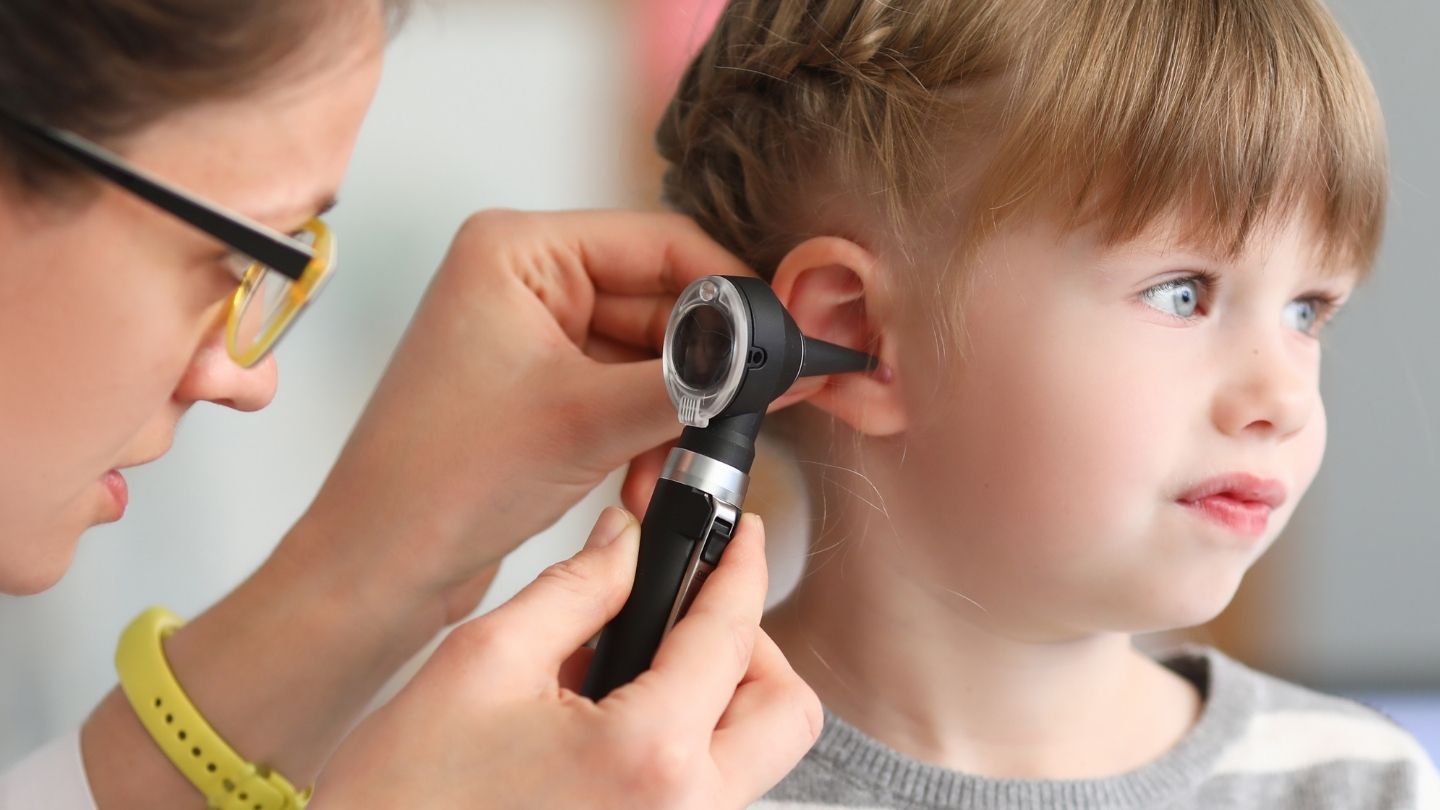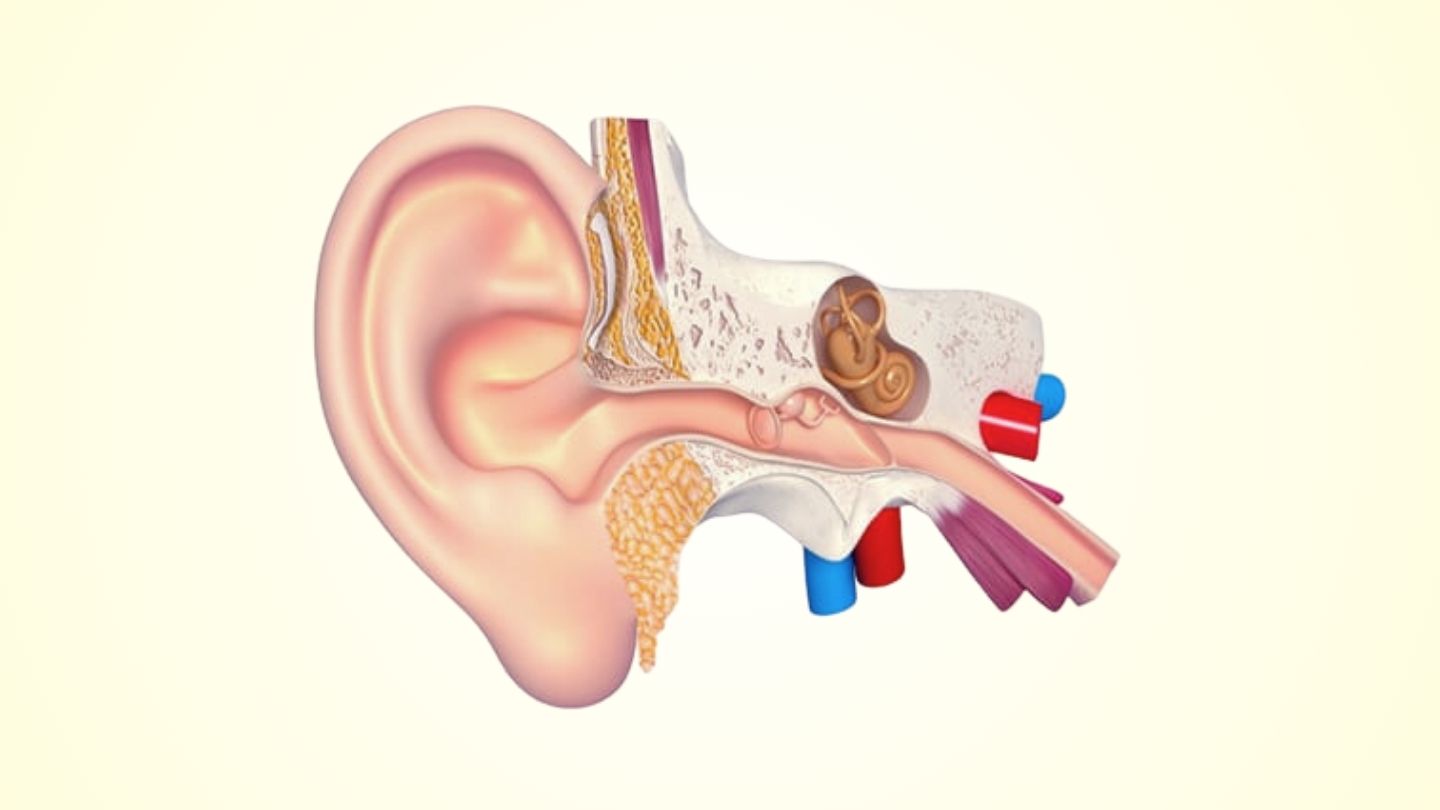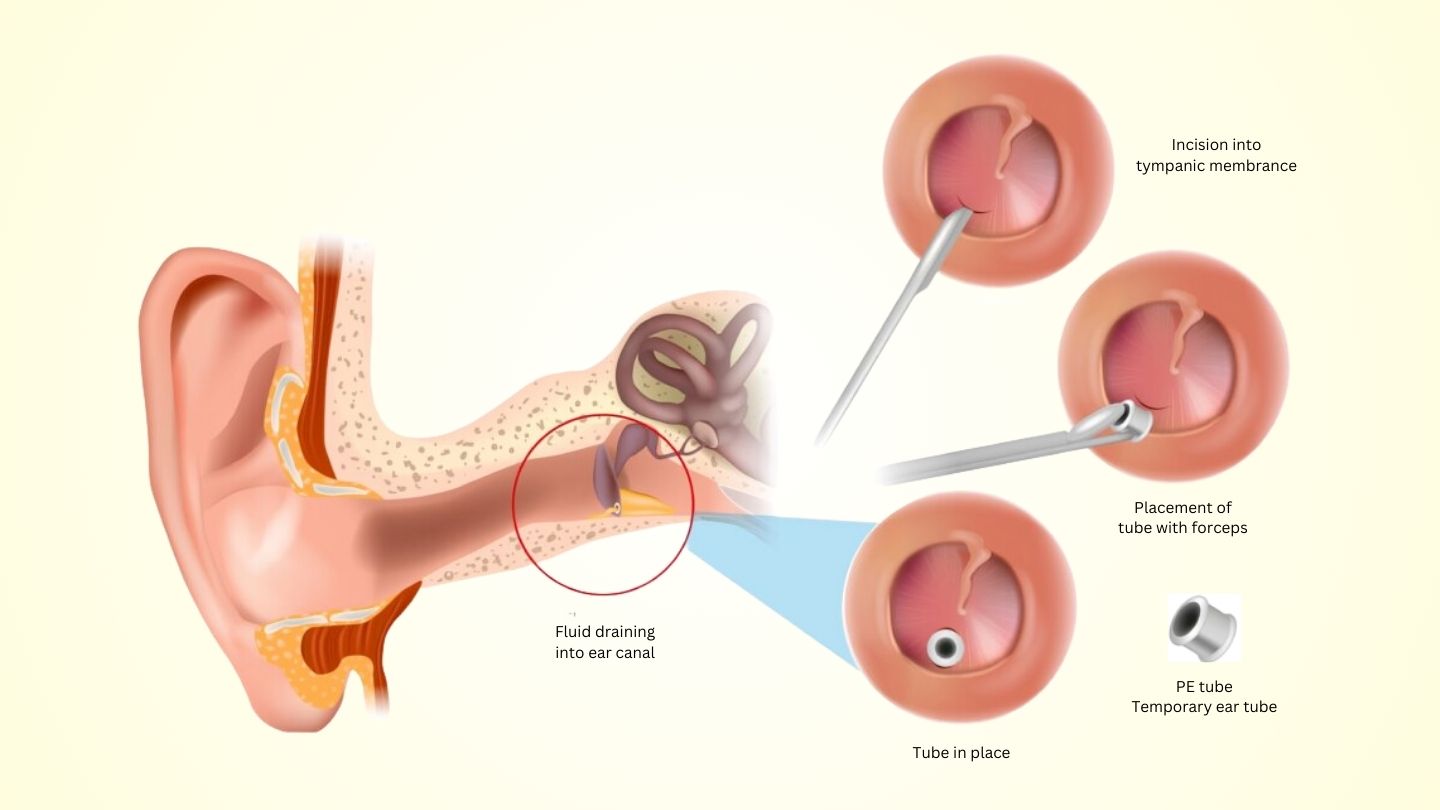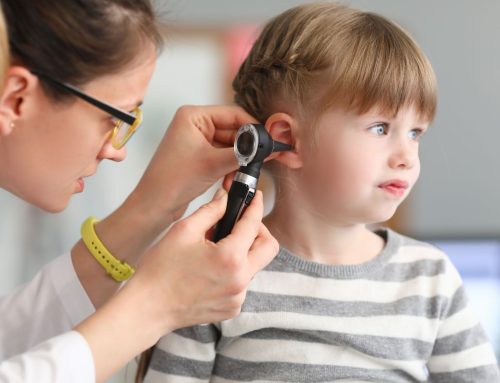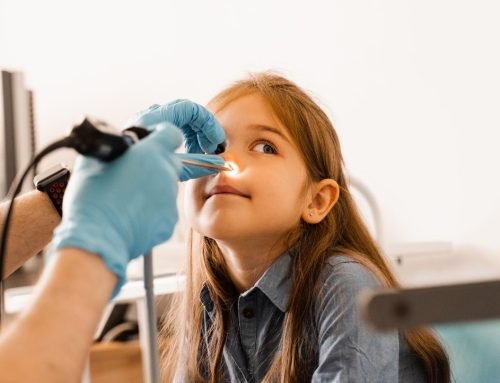Ear tube surgery is a common procedure for children experiencing frequent ear infections or fluid buildup. Understanding the key aspects of this surgery can help parents feel more informed and prepared. Here are the top things for kids to know about ear tube surgery.
Key Takeaways
- Ear tube surgery is a common procedure for children aimed at preventing chronic ear infections and alleviating fluid buildup in the middle ear.
- The surgery is quick, typically performed under general anesthesia, and provides long-term benefits, including improved hearing and quality of life.
- Post-surgery recovery is generally smooth, though parents should monitor their child for any complications and know when to seek medical advice.
What Is Ear Tube Surgery?
Surgical placement of tympanostomy tubes, commonly referred to as ear tube surgery, is conducted to mitigate persistent fluid accumulation and recurrent ear infections within the middle ear. Ear tubes are diminutive cylinders no larger than a match head that establish an airway for ventilation in the middle ear, thereby reducing fluid retention and diminishing infection risks.
When afflicted by an ear infection, accumulated fluid in the middle ear can lead to discomfort and possible hearing impairment. The insertion of these ventilation tubes assists in draining this liquid, which relieves pressure and eases pain. With these pathways established by the tubes, administering antibiotic drops directly into the affected area becomes more straightforward, allowing effective localized treatment without resorting to oral medications.
Notably prevalent among children’s surgical interventions, with roughly half a million undergoing it annually – especially those plagued by reoccurring or long-standing infections or enduring continual serious buildup – is this procedure involving tympanostomy tubing.
As simple as it may be operationally speaking. Its impact on enhancing life quality cannot be overstated: ameliorating soreness associated with ears significantly improving auditory functions, aiding better rest at night, thus tempering any potential restlessness caused due to emotions like irritability stemming from such distresses.
Why Might My Child Need Ear Tubes?
Ear tube surgery may be recommended for children who suffer from persistent ear infections, as these can result in considerable discomfort, challenges with hearing, and potential speech development delays. Should your child endure several instances of ear infections within a brief timeframe, they might benefit from the insertion of an ear tube.
Fluid accumulation in the middle ear due to recurrent episodes of infection can lead to auditory complications and distress. This buildup not only provokes pain but could also affect a child’s capacity for clear hearing, which is crucial for their language and speech progress. The introduction of ear tubes aids in draining this fluid and serves as a preventative measure against Infectious occurrences while restoring proper hearing functions.
By allowing pressure equalization through the installation of tubes into the ears. Balance disturbances that often accompany chronic middle-ear infections are mitigated—ultimately helping resolve associated equilibrium issues. Post-tube surgery, many children see appreciable enhancements in their everyday lives: experiencing more effective communication abilities due to improved speech growth along with fewer concerns related to their ears on account of these pressure equalization tubes.
How Is Ear Tube Surgery Performed?
Ear tube surgery, a simple operation usually conducted under general anesthesia, ensures the child’s comfort and immobility. The procedure is swift, typically completed within 10 to 15 minutes—offering an effective remedy for recurrent ear infections.
Performed by an ear, nose, and throat (ENT) specialist, this surgery involves creating a small incision in the eardrum to evacuate any fluid accumulated in the middle ear space. This helps alleviate pressure and fend off subsequent infections. Subsequently, a diminutive ear tube is placed into this opening to promote air circulation into the middle ear cavity and prevent future fluid accumulations.
Commonly done as an outpatient service, it allows your child’s discharge on that very day of surgery. Despite its brief execution time frame, there are enduring advantages: significant relief from incessant ear infections, thereby enhancing overall auditory health quality. Ear tube insertion stands out as both a secure and efficient intervention tackling persistent issues related to ears, which can aid your young one in experiencing life more joyfully without discomfort-related concerns.
Furthermore, the insertion of ear tubes can also reduce the need for frequent visits to the doctor’s office or hospital for treatment of ear infections. This not only saves valuable time and money for parents but also reduces stress. If your child is experiencing issues that may require ear tubes, it’s important to seek a reputable ENT center specializing in frenulectomies for children in Atlanta to ensure proper placement and management.
Benefits of Ear Tube Surgery
Numerous advantages are associated with ear tube surgery that can significantly improve a child’s well-being. A key benefit is the diminishment in both frequency and intensity of middle ear infections. Ear tubes aid in promoting fluid outflow and maintaining adequate air circulation within the middle ear, which helps prevent subsequent infections while diminishing dependence on oral antibiotic treatments.
Another vital outcome of tube surgery for ears is enhanced auditory function. Persistent fluid accumulation within the middle ear may lead to hearing impairment, potentially impacting speech and linguistic development. Through addressing these complications, inserting an ear tube aids in improving your child’s capacity for acute hearing, thereby fostering superior communicative abilities and overall growth.
To these benefits, having an ear tube permits a more efficient method for administering antibiotic drops during episodes of infection. Due to the presence of tubes inserted into the ears, antibiotics can be delivered directly to where they’re most needed: the middle-ear space. This ensures quicker relief from symptoms and thorough treatment outcomes. Particularly for children who frequently suffer from infections affecting their ears—where doctors might prescribe specialized eardrops—the incorporation of such tubes becomes especially advantageous by facilitating symptom management through localized medication delivery systems.
Recovery After Ear Tube Surgery
The recuperation period following ear tube surgery is typically rapid and uneventful, enabling kids to quickly get back to their regular routines. As the procedure is carried out on an outpatient basis, children are usually discharged shortly after they recover from the effects of anesthesia. It’s common for them to experience brief side effects such as sleepiness or queasiness post-surgery, which tend to dissipate within several hours.
After undergoing tube surgery, some temporary sensations like itching or a feeling of fullness in the ears may occur. There might also be a minor discharge of fluid mixed with blood from the ears. This is expected and should decrease over approximately one week’s time. To aid recovery and fend off infections, healthcare providers may prescribe antibiotic ear drops.
Typically, within just 48 hours post-procedure—unless contrary guidance comes from their physician—children can go back to engaging in all their typical activities, including swimming and air travel. Nevertheless, it’s important that parents stay vigilant for any signs that could indicate potential complications such as ongoing vomiting or feverish symptoms—and seek medical consultation if these arise—to ensure swift intervention when needed. Speaking though, most children navigate through recovery smoothly, paving the way for better overall health for their ears.
How Long Do Ear Tubes Stay In?
Typically, ear tubes are inserted for a finite period, usually between six months to one and a half years. The duration they remain in place can differ from one child to another based on individual ear health conditions and their body’s reaction to the tubes. Ordinarily, these tubes will dislodge by themselves within 12 to 36 months following insertion due to natural eardrum healing processes that expel the tubes.
Should the ear tubes not come out by themselves after three years have passed, it may be necessary for them to be surgically extracted in order to ward off any potential complications. It is critical that your child has ongoing appointments with their physician so that not only does this permit close observation of how well the ear tubes are functioning, but it also provides an opportunity for determining whether intervention is required should they fail to fall out independently.
When to Call Your Doctor
Following ear tube surgery, it’s crucial to recognize the indications for seeking medical consultation in case complications arise. Immediate medical attention should be sought if your child exhibits intense ear pain or noticeable bleeding with drainage from the ear. Should new or persistent ear pain not subside, contacting a doctor without delay is advised.
Continuous discharge from the ears extending beyond one-week post-surgery, especially if accompanied by yellowish-green fluid and an unpleasant smell, necessitates a doctor’s evaluation. Any discomfort linked to prescribed ear drops or the emergence of unusual symptoms after tube surgery demands prompt discussion with your healthcare provider.
Maintaining alertness and taking an active role in monitoring your child’s recovery after their tube surgery can greatly assist in achieving a smooth healing process and maintaining healthy ears.
Wrapping Up
In summary, ear tube surgery is a highly effective procedure for children suffering from chronic ear infections and fluid buildup in the middle ear. The surgery helps to alleviate pain, improve hearing, and reduce the frequency of infections, significantly enhancing a child’s quality of life. With proper care and regular follow-up appointments, the benefits of ear tube surgery can be long-lasting and impactful.
Pediatric Ear Nose and Throat of Atlanta, P.C., our team of board-certified, fellowship-trained pediatric specialists is dedicated to providing the highest quality care for your child. We understand the importance of early intervention and effective treatment. Trust us for effective frenulectomies treatment for kids in Atlanta, and we are here to support you every step of the way. If you have any concerns about your child’s ear health, reach out to us for the best care.
Frequently Asked Questions
How long does ear tube surgery take?
Ear tube surgery generally takes about 10 to 15 minutes and is conducted under general anesthesia. This brief procedure allows for effective treatment of ear-related issues.
How long will the ear tubes stay in place?
Ear tubes typically stay in place for about 6 to 18 months and usually fall out naturally within 12 to 36 months following their placement.
What are the signs that I should call my child’s doctor after ear tube surgery?
You should call your child’s doctor after ear tube surgery if you notice severe ear pain, significant bleeding, persistent ear drainage, or yellowish-green drainage.
These symptoms require immediate medical attention to ensure your child’s well-being.
Can my child go swimming after ear tube surgery?
Most children can return to swimming within two days after ear tube surgery, provided there are no specific restrictions from their doctor.
Always consult your physician for personalized guidance.

